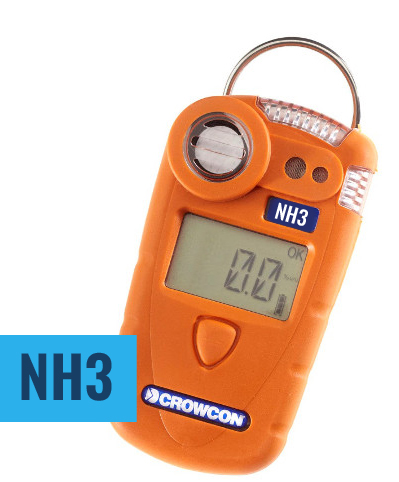There are many risks to workers working within the food and beverage industry and can result in fatalities, the main risks involve exposure to harmful levels of Carbon Dioxide, Nitrogen and Ammonia. These gases are used for a variety of purposes in the food and beverage industry.
Carbon Dioxide (CO2)
Carbon Dioxide under the Control of Substances Hazardous to Health Regulations 2002 (COSHH) is described as a ‘substance hazardous to health. It is a toxic gas which is commonly used within the food and beverage industry but poses a huge risk.
Despite high awareness of the dangers CO2. Workers are still injured, sometimes fatally. These incidents are completely avoidable if the proper precautions are carried out.
Carbon Dioxide might see harmless itself, however it becomes a major problem when it rises to dangerous levels within a certain environment. CO2 is completely odourless and colourless at room temperature and atmospheric pressure deeming it very unlikely for anyone to realise there is any danger. As low as 0.5% volume of CO2 can be hazardous to a person, while 7% can lead to death simply within 5 minutes.
CO2 often collects in small spaces which adds hazards to confined spaces such as cellars. Carbon dioxide is a much heavier than air, resulting in it sinking to the floor forming invisible pockets. There is a risk to life when workers are exposed to high levels of CO2 can die from lack of oxygen. This is a result of displacement of gases within the atmosphere.
Monitoring levels of CO2 in the atmosphere is vital to keeping workers safe and prevent serious incidents. One reliable form of ensuring the safety of each individual is to provide each worker with personal CO2 detector. This will allow each person to monitor their own exposure. These devices should be worn within the breathing zone, such as the breast pocket for maximum safety.
Nitrogen
Nitrogen creates a less acidic beer tasting creamier than those created with carbon dioxide. Nitrogen creates bubbles, particularly in stouts, pale ales and porters. Nitrogen enables the safe bulk transportation of PET bottles as they are usually too unstable to carry heavy weights. The use of nitrogen is to pressurise drinks within the PET bottles.
Nitrogen itself is not toxic, however high levels within the atmosphere can become hazardous to workers as it will displace the oxygen content. Even the smallest drop in oxygen levels can cause several health problems including nausea, drowsiness, dizziness, loss of consciousness and ultimately death. The expansion rate of nitrogen is so high causing even the smallest leak to be fatal.
Nitrogen is hard to identify when a leak has occurred as it is colourless and odourless. Workers are advised to monitor the levels of O2 in the atmosphere, as opposed to monitoring nitrogen levels. This ensures workers are aware of any low levels immediately and can react as quick as possible.
Workers must be provided with the correct equipment to ensure their safety. Oxygen detectors such as the new Crowcon gasman O2 with five year oxygen sensor should be worn within the breathing zone for the most accurate use.
Ammonia
Ammonia refrigeration is commonly used within many industrial food and beverage facilities as it is one of the most energy efficient and cost-effective ways of storing and processing food and beverage products. Despite the use of ammonia in many companies, not all businesses have the correct protocol in place.
When a worker is exposed to large doses of Ammonia it can cause fatalities due to its toxic and flammable properties. Ammonia is a colourless gas which is difficult to detect from sight alone. It does have a very distinct odour which can help an employee identify a leak if they smell it. To ensure the safety of workers an NH3 monitor is advised.
In case of an emergency event workers must be prepared with the correct equipment. Employers are required by law to fit vapour gas detectors in refrigeration rooms, but there are no requirements for personal protective equipment. Workers do have the right to a safe working environment and the addition of necessary safety equipment can prevent facilities and ensure their safety.
When a worker is provided with a full-face respirator it prevents them from inhaling any harmful vapours when handling Ammonia. A full escape set also provides the user with a safe supply of breathable air in case of a high exposure during a leak. It is crucial employees are trained to use the equipment correctly before undertaking any work.
Fatal incidences can be prevented when workers are equipped with the correct equipment. To prevent workers from CO2 or Ammonia exposure a thorough assessment of the environment can ensure to right gear is used.





